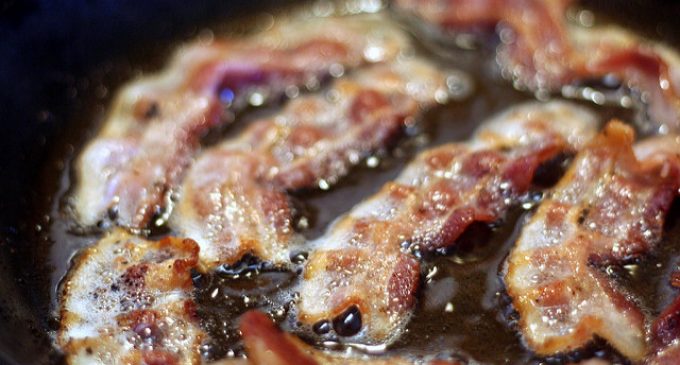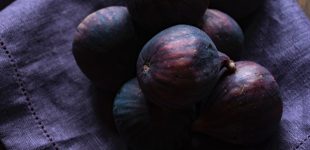
Per a pound of bacon, you should be able to render approximately one-half (1/2) to two-thirds (2/3) cup of grease. Also, bacon is salty because it’s part of the curing process. When cooking with the fat be careful with the additional salt you add to the recipe.
Strain Out the Solids
Once you’ve cooked and eaten your delicious bacon, you can attend to all of that liquid fat you worked so hard to cook out. Strain the fat through a fine mesh sieve into your storage vessel. Don’t use plastic—if the fat is still hot, it could melt the container. I like to use a pint-sized glass jar with a wide mouth. It’s sturdy, won’t impart plasticy flavors into the grease, and the wide opening is convenient for spooning out dollops of fat. As the bacon cooks, it will inevitably leave behind bits and pieces of meat. You don’t want those in your bacon grease; when you cook with it later, they’ll burn and impart a bitter flavor to your food. As a bonus, removing the solids means it’ll last for just about forever in your fridge.Because bacon grease is solid at room temperature, keep that in mind and be smart in how you use it. It’s ideal for sautéing or roasting vegetables; heat it first to re-liquify it. Then coat your veg with it; a generous tablespoon will be enough for a sheet pan of veggies. Or, rub it on a chicken before popping the bird in the oven. It doesn’t perform in the same way that liquid-at-room-temperature fats, like oils, do. In other words? No vinaigrettes.
Please stay away from bacon that has maple flavoring added if you want to use bacon fat in the future. It will add an unwanted sweetness to anything you will want to cook and while that may be okay some of the time, not always. If you want sweetness you can add your own into the recipe.
Article Source: Bon Appetit


Sweet
Yum!
Dara O’Hanlon